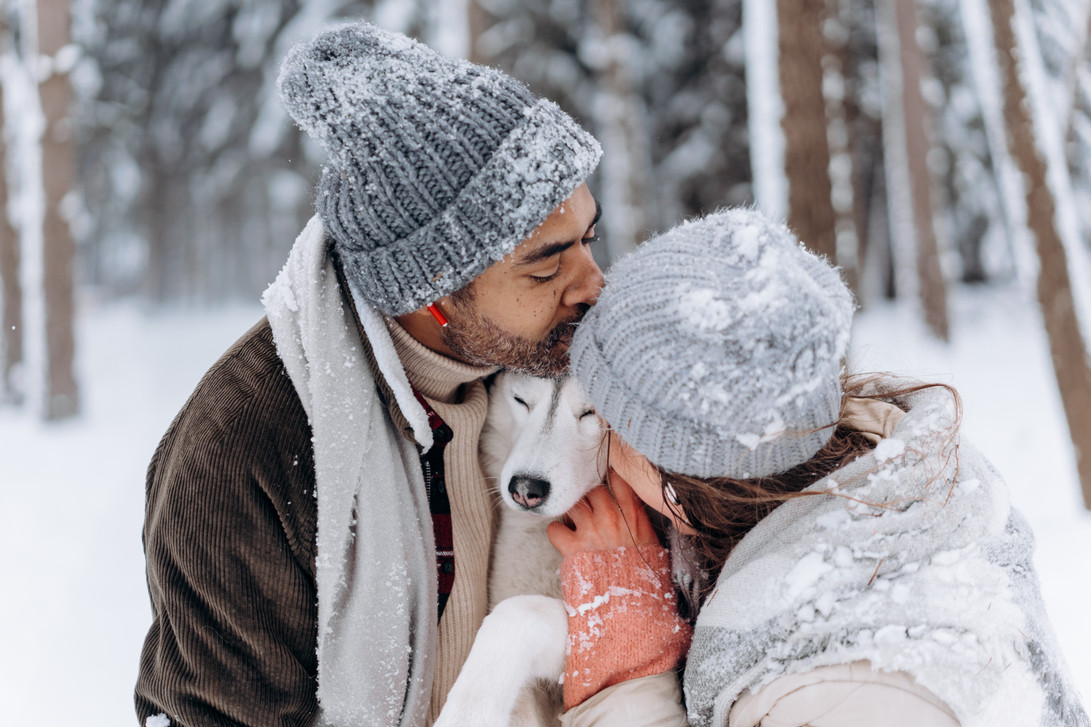Winter is a challenging season that brings about significant changes for pets and their owners. Veterinary practices must be prepared to guide their clients on how to manage their pets’ health during this chilly time of year. Transitioning from day-to-day routines to adapting for winter can be daunting, especially for those clients who are new pet owners. How can you help your clients make necessary changes to protect their furry companions from the plummeting temperatures and potential winter hazards?
Educating Pet Owners: Is the Pet at Risk?
It's important for veterinary practices to educate pet owners on the vulnerabilities their pets face in winter. The most obvious risk is the amount of protection provided by a pet's fur. Those with thinner coats are more exposed to the cold, while even those with thicker fur can struggle with extreme temperatures. However, there are less obvious factors that can affect a pet's ability to handle winter weather.
- Body Composition and Health: Pets with low body fat and metabolic conditions, such as young and old animals, are more vulnerable to cold. It's crucial to remind clients that these pets need extra care.
- Height Challenges: Animals with short legs encounter more snow. This increased contact with water and ice can lead to faster body temperature loss.
- Wet Fur Woes: If a pet's fur becomes wet, its ability to insulate is minimized. Wet fur fails to trap warm air, providing less of a barrier against cold.
- Chronic Conditions: Many chronic illnesses, including diabetes or kidney disease, can reduce a pet's cold tolerance. Clients should be reminded of this to ensure that they monitor their pets closely.
Spreading Awareness for Cold-Related Issues
Timely intervention is key when dealing with cold-related health concerns. Veterinary practitioners need to make sure their clients recognize signs of distress in their pets due to the cold. While shivering is a common sign, there are subtle indicators of hypothermia, such as sudden anxiousness, lethargy, slow movements, and whining.
Frostbite poses a significant risk as well. Emphasize to your clients that tissue damage is not always immediately visible after exposure. It's vital for veterinary practices to provide reminders to clients about these signs. Education is key so clients know when to seek your help, increasing the chance for prompt and effective treatment.
Distributing educational brochures and flyers that detail cold weather or cold-related symptoms and preventive measures can be impactful. Customizable magnets with your practice’s emergency contact information can serve as constant reminders on clients’ refrigerators. Veterinary practices can also use branded postcards to send seasonal reminders or notes. These tools not only educate pet owners but also strengthen client relationships by showing that you prioritize their pets' well-being.
Preparing Warm Spaces for Outdoor Animals
Helping outdoor pets stay warm should also remain a priority. Educate clients on optimizing shelters like dog houses to ensure they are warm, dry, and protected from the wind. It's good practice to check these structures before and during the winter months to patch any holes or gaps. This maintenance goes a long way in keeping pets safe and warm.
Remind your clients about the properties of materials used for bedding. Just like fur, materials lose their insulating effectiveness when they become wet. It's essential for clients to understand the need for clean, dry bedding. There are specialized, heated blankets and pads available for outdoor use, which are preferable since household electric blankets can present hazards if damaged.
Stressing the importance of hydration is also critical. Cold, dry air can dehydrate pets. Encouraging clients to use heated water dishes ensures that pets have ongoing access to fresh water even when temperatures drop significantly.
Enhancing Safety During Outdoor Walks and Activities
For pets that enjoy the outdoors, winter shouldn’t mean an end to their fun and exercise, but it does require extra precautions. Encourage your clients to use pet clothing for additional warmth. However, stress that clothing should only be worn when pets are under supervision due to the potential risk of choking hazards if the clothing snags on something.
Booties are another great recommendation. They protect paws from frostbite caused by prolonged contact with ice-cold surfaces. Advising clients to clear an area for playing and bathroom routines reduces direct exposure to snow and ice, decreasing the need for extra clothing.
Chemical hazards during winter present another risk. Even products labeled as pet-safe, like ice melt, can cause problems. They may lead to digestive issues if ingested or result in chemical burns from residue building up on paws and fur. Advise clients to check for coolant leaks around their property, as these are more common in cold weather and can tempt pets to ingest antifreeze. It’s good practice to recommend a quick rinse to remove these potential dangers from pets before they start licking their fur.
Equipping Your Veterinary Practice for Client Engagement
Your veterinary practice should be the central resource for your clients, especially during the winter season when they need additional guidance on pet care. At Positive Impressions, we empower our clients with a range of promotional products. These include reminder cards, birthday greetings, tote bags, practical magnetic business cards, and more. All of these items can be custom-printed with your practice’s details, ensuring that clients can easily access your contact information and personalized messaging.
Don’t know where to start? Take a look at the products we offer on our website, or follow our latest specials on Facebook. These resources help ensure your clients are prepared to face the winter season with their pets’ best interests at heart. Keep the communication open and consistent. That way, your veterinary practice will be positioned as the go-to partner for all seasonal pet-related health needs.

